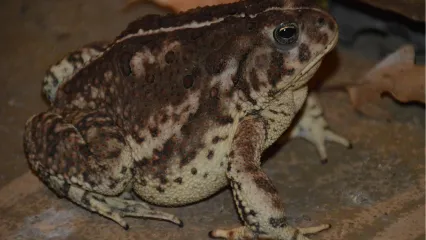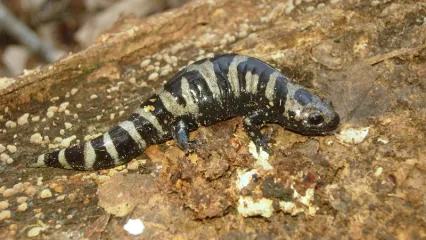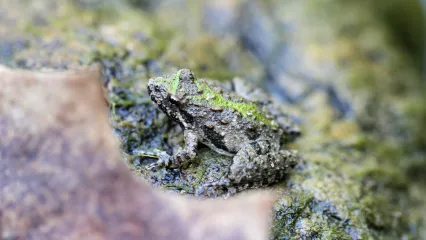
Description
The skin of Woodhouse’s toads appears dry and warty and the color pattern is highly variable. The dorsum is light gray or brown with irregular dark spots. Each dark spot may have two to four small protuberant spots. These toads frequently have a narrow light brown or yellow stripe down the middle of the back. Cranial crests are present and contact the large elongate parotoid glands on the upper part of each side of the upper back. The belly is light tan, usually unmarked, but a gray spot can occur on the chest. The lower part of the belly has a pinkish area called the pelvic patch; the skin of the patch is highly permeable to water, allowing the toad to rehydrate by pressing this part of the body on damp soil.
Tadpoles are mostly black, but the tail musculature is bicolored with black on the upper part of the tail and an irregular white stripe on the lower third of the tail. The tadpole has a wash of golden iridophores over the entire body; this pigment can be especially dense on the upper part of the tail musculature.
The call of Woodhouse’s toad is a long nasal sound, low in pitch. It may last for several seconds.
Size
Woodhouse’s toads are large, attaining a body length to about 5 inches. Females are larger than males.
Habitat
Woodhouse’s toad is the most common toad throughout most of Oklahoma. It is the toad most often seen hunting for insects beneath porch lights around homes in long-established neighborhoods and beneath street lights. The distribution of Woodhouse’s toad includes the Central Plains in the U.S., extending west to Arizona, New Mexico, Wyoming, and eastern Montana; their range extends south into Mexico and north into Canada.
Life Cycle
Woodhouse’s toad is an explosive breeder that can form choruses from March through August, assuming that rainfall is sufficient. Choruses form around temporary pools, flooded fields or ditches, river bottoms, and marshes. The toads prefer sandy areas. Males attract females to the breeding site with their call. Females can deposit up to 25,000 eggs, which are laid in long strands. Tadpoles hatch rapidly, depending on temperature and can metamorphose in two to three weeks.
Like most other frogs and toads, Woodhouse's toads feed on small insects.
How To Observe
These toads are commonly seen around houses in areas with suitable habitat, especially at night. They are frequently observed in small communities under street lights, where they search for insects. During spring, especially following rains, Woodhouse’s toads can be seen by driving slowly on paved roads and searching for them in the headlights.
(This profile was created by Dr. Laurie Vitt as part of a partnership between the Wildlife Department and the Sam Noble Oklahoma Museum of Natural History. It was funded as part of a larger State Wildlife Grant to survey and inventory amphibians and reptiles of the Wildlife Management Areas of Oklahoma: T-35-P-1.)


